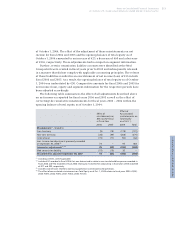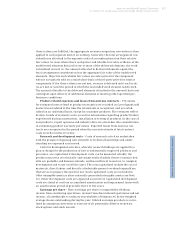Siemens 2007 Annual Report Download - page 222
Download and view the complete annual report
Please find page 222 of the 2007 Siemens annual report below. You can navigate through the pages in the report by either clicking on the pages listed below, or by using the keyword search tool below to find specific information within the annual report.-
 1
1 -
 2
2 -
 3
3 -
 4
4 -
 5
5 -
 6
6 -
 7
7 -
 8
8 -
 9
9 -
 10
10 -
 11
11 -
 12
12 -
 13
13 -
 14
14 -
 15
15 -
 16
16 -
 17
17 -
 18
18 -
 19
19 -
 20
20 -
 21
21 -
 22
22 -
 23
23 -
 24
24 -
 25
25 -
 26
26 -
 27
27 -
 28
28 -
 29
29 -
 30
30 -
 31
31 -
 32
32 -
 33
33 -
 34
34 -
 35
35 -
 36
36 -
 37
37 -
 38
38 -
 39
39 -
 40
40 -
 41
41 -
 42
42 -
 43
43 -
 44
44 -
 45
45 -
 46
46 -
 47
47 -
 48
48 -
 49
49 -
 50
50 -
 51
51 -
 52
52 -
 53
53 -
 54
54 -
 55
55 -
 56
56 -
 57
57 -
 58
58 -
 59
59 -
 60
60 -
 61
61 -
 62
62 -
 63
63 -
 64
64 -
 65
65 -
 66
66 -
 67
67 -
 68
68 -
 69
69 -
 70
70 -
 71
71 -
 72
72 -
 73
73 -
 74
74 -
 75
75 -
 76
76 -
 77
77 -
 78
78 -
 79
79 -
 80
80 -
 81
81 -
 82
82 -
 83
83 -
 84
84 -
 85
85 -
 86
86 -
 87
87 -
 88
88 -
 89
89 -
 90
90 -
 91
91 -
 92
92 -
 93
93 -
 94
94 -
 95
95 -
 96
96 -
 97
97 -
 98
98 -
 99
99 -
 100
100 -
 101
101 -
 102
102 -
 103
103 -
 104
104 -
 105
105 -
 106
106 -
 107
107 -
 108
108 -
 109
109 -
 110
110 -
 111
111 -
 112
112 -
 113
113 -
 114
114 -
 115
115 -
 116
116 -
 117
117 -
 118
118 -
 119
119 -
 120
120 -
 121
121 -
 122
122 -
 123
123 -
 124
124 -
 125
125 -
 126
126 -
 127
127 -
 128
128 -
 129
129 -
 130
130 -
 131
131 -
 132
132 -
 133
133 -
 134
134 -
 135
135 -
 136
136 -
 137
137 -
 138
138 -
 139
139 -
 140
140 -
 141
141 -
 142
142 -
 143
143 -
 144
144 -
 145
145 -
 146
146 -
 147
147 -
 148
148 -
 149
149 -
 150
150 -
 151
151 -
 152
152 -
 153
153 -
 154
154 -
 155
155 -
 156
156 -
 157
157 -
 158
158 -
 159
159 -
 160
160 -
 161
161 -
 162
162 -
 163
163 -
 164
164 -
 165
165 -
 166
166 -
 167
167 -
 168
168 -
 169
169 -
 170
170 -
 171
171 -
 172
172 -
 173
173 -
 174
174 -
 175
175 -
 176
176 -
 177
177 -
 178
178 -
 179
179 -
 180
180 -
 181
181 -
 182
182 -
 183
183 -
 184
184 -
 185
185 -
 186
186 -
 187
187 -
 188
188 -
 189
189 -
 190
190 -
 191
191 -
 192
192 -
 193
193 -
 194
194 -
 195
195 -
 196
196 -
 197
197 -
 198
198 -
 199
199 -
 200
200 -
 201
201 -
 202
202 -
 203
203 -
 204
204 -
 205
205 -
 206
206 -
 207
207 -
 208
208 -
 209
209 -
 210
210 -
 211
211 -
 212
212 -
 213
213 -
 214
214 -
 215
215 -
 216
216 -
 217
217 -
 218
218 -
 219
219 -
 220
220 -
 221
221 -
 222
222 -
 223
223 -
 224
224 -
 225
225 -
 226
226 -
 227
227 -
 228
228 -
 229
229 -
 230
230 -
 231
231 -
 232
232 -
 233
233 -
 234
234 -
 235
235 -
 236
236 -
 237
237 -
 238
238 -
 239
239 -
 240
240 -
 241
241 -
 242
242 -
 243
243 -
 244
244 -
 245
245 -
 246
246 -
 247
247 -
 248
248 -
 249
249 -
 250
250 -
 251
251 -
 252
252 -
 253
253 -
 254
254 -
 255
255 -
 256
256 -
 257
257 -
 258
258 -
 259
259 -
 260
260 -
 261
261 -
 262
262 -
 263
263 -
 264
264 -
 265
265 -
 266
266 -
 267
267 -
 268
268 -
 269
269 -
 270
270 -
 271
271 -
 272
272 -
 273
273 -
 274
274 -
 275
275 -
 276
276 -
 277
277 -
 278
278 -
 279
279 -
 280
280 -
 281
281 -
 282
282 -
 283
283 -
 284
284 -
 285
285 -
 286
286 -
 287
287 -
 288
288 -
 289
289 -
 290
290 -
 291
291 -
 292
292 -
 293
293 -
 294
294 -
 295
295 -
 296
296 -
 297
297 -
 298
298 -
 299
299 -
 300
300 -
 301
301 -
 302
302 -
 303
303 -
 304
304 -
 305
305 -
 306
306 -
 307
307 -
 308
308 -
 309
309 -
 310
310 -
 311
311 -
 312
312 -
 313
313 -
 314
314 -
 315
315 -
 316
316 -
 317
317 -
 318
318 -
 319
319 -
 320
320 -
 321
321 -
 322
322 -
 323
323 -
 324
324 -
 325
325 -
 326
326 -
 327
327 -
 328
328 -
 329
329 -
 330
330 -
 331
331 -
 332
332 -
 333
333 -
 334
334 -
 335
335 -
 336
336
 |
 |
222 Notes to Consolidated Financial Statements
(in millions of €, except where otherwise stated and per share amounts)
Cash fl ow hedges – The effective portion of changes in the fair value of deriva-
tive instruments designated as cash fl ow hedges are recognized in Other compo-
nents of equity, net of applicable deferred income taxes, and any ineffective por-
tion is recognized immediately in net income. Amounts accumulated in equity are
reclassifi ed into net income in the same periods in which the hedged item affects
net income.
See Note 31, Derivative fi nancial instruments and hedging activities for further
information.
Share-based payment – As permitted under IFRS 1, First-time Adoption of
International Financial Reporting Standards, IFRS 2, Share-based Payment has not
been retrospectively applied to all share-based payment awards. This exemption
has been applied for all equity awards which were granted prior to November 7,
2002, as well as those equity awards granted prior to October 1, 2003, which
vested before January 1, 2005. All such equity awards exempted from IFRS 2 con-
tinue to be accounted for under the intrinsic value approach. IFRS 2 distinguishes
between cash-settled and equity-settled share-based payment transactions. For
both types, the fair value is measured at grant date and the compensation expense
is allocated over the period during which the employees become unconditionally
entitled to the awards. Cash-settled awards are remeasured at fair value on each
reporting date until the award is settled. Siemens uses an option pricing model to
determine the fair value of its share-based payment plans. See Note 33 for further
information on share-based payment transactions.
Initial application of standards and interpretations in fi scal 2007
For information on the adoption of IFRS 8, Operating Segments, in fi scal 2007
please refer to Notes 1 and 36.
Standards and interpretations issued but not yet adopted
In November 2006, the IFRIC issued IFRIC Interpretation 12, Service Concession
Arrangements, to provide guidance to private sector entities on certain recogni-
tion and measurement issues that arise in accounting for public-to-private service
concession arrangements. Service concession arrangements are arrangements
whereby a government or other body grants contracts for the supply of public ser-
vices (e.g. roads, energy distribution, transportation) to private operators. This
Interpretation applies to public-to-private service concession arrangements if
(a) the grantor controls or regulates what services the operator must provide with
the infrastructure, to whom it must provide them, and at what price; and (b) the
grantor controls – through ownership, benefi cial entitlement or otherwise – any
signifi cant residual interest in the infrastructure at the end of the term of the
arrangement. Control of the asset remains in public hands but the private sector
operator is responsible for construction activities, as well as for operating and
maintaining the public sector infrastructure. The operator does not recognize the
infrastructure as its property, plant and equipment if the infrastructure is exist-
ing infrastructure of the grantor, or is infrastructure constructed or purchased
by the operator as part of the service arrangement. The operator recognizes
either a fi nancial asset or an intangible asset, or both, as compensation for any
construction services that it provides. Any concession arrangements within the
